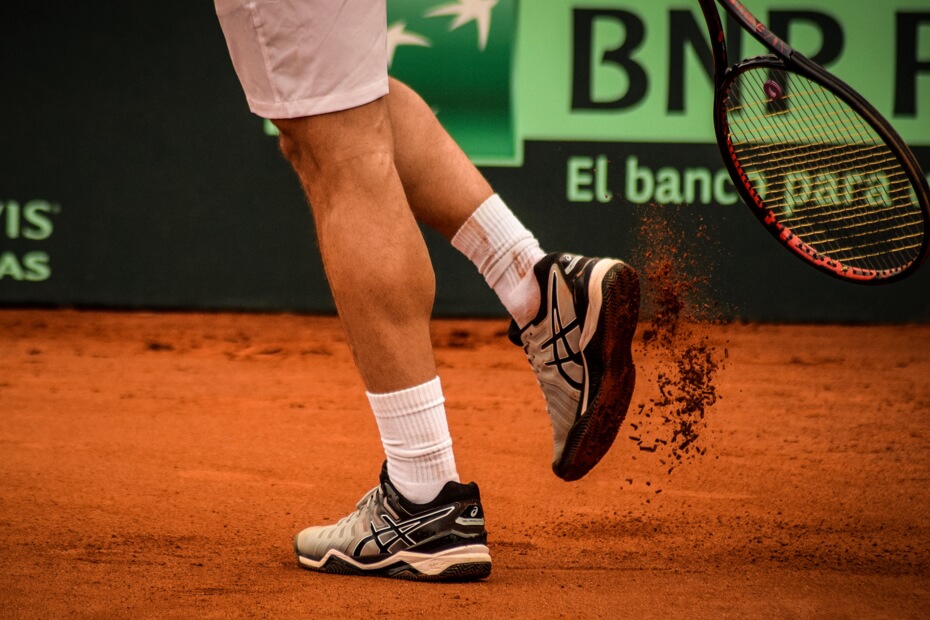Are you an avid tennis player or someone who simply loves wearing tennis shoes for their comfort and style? If so, you may have found yourself wondering, “How long do tennis shoes actually last?” Whether you’re hitting the courts regularly or simply wearing them as your go-to everyday shoes, understanding the lifespan of your beloved tennis shoes is essential for maintaining their performance and getting the most value out of your investment.
Thank you for reading this post, don't forget to subscribe!Tennis shoes, like any other footwear, endure wear and tear over time. From the constant impact on hard surfaces to the friction caused by quick and dynamic movements on the court, these shoes are subjected to a great deal of stress. However, the longevity of tennis shoes can vary depending on various factors, such as the quality of the materials used, the frequency of use, and how well they are cared for. In this article, we will delve into the factors that influence the lifespan of tennis shoes, provide tips on how to extend their durability, and offer guidance on when to consider replacing them. Get ready to step into the world of tennis shoe longevity and make informed decisions about your footwear choices!
Tennis shoes typically last between 300 and 500 miles of use, depending on factors like frequency of wear, playing style, and court surface. It is recommended to replace tennis shoes every 6-12 months or when the outsole starts to show significant wear. Regularly inspecting the shoes for signs of wear and tear can help determine when it’s time for a new pair.

How Long Do Tennis Shoes Last?
When it comes to investing in a good pair of tennis shoes, one of the most common questions that arise is how long they will last. The durability of tennis shoes depends on several factors, including the material used, the frequency of use, and the level of care taken. In this article, we will provide you with a step-by-step guide on how long you can expect your tennis shoes to last, and how you can prolong their lifespan.
Step 1: Choose Quality Materials
The first step in ensuring the longevity of your tennis shoes is to choose a pair made from high-quality materials. Opt for shoes that are made from durable synthetic materials or genuine leather. These materials are known for their durability and ability to withstand wear and tear. Additionally, look for shoes that have reinforced stitching and sturdy soles, as these features contribute to the overall durability of the shoes.
Furthermore, it is important to consider the specific type of tennis shoes you need. Different shoes are designed for different playing surfaces, such as clay courts or hard courts. Selecting shoes that are appropriate for the surface you regularly play on will help prevent premature wear and tear, ensuring that your shoes last longer.
Step 2: Rotate Your Shoes
Another way to extend the lifespan of your tennis shoes is to rotate them. Avoid wearing the same pair of shoes for consecutive matches or training sessions. By alternating between two or more pairs of tennis shoes, you give each pair ample time to recover and regain their cushioning and support. This practice helps to prevent excessive wear and tear on a single pair of shoes, thus prolonging their overall lifespan.
When rotating your tennis shoes, make sure to store them in a cool and dry place. Exposing them to extreme heat or humidity can cause the materials to deteriorate more quickly. Additionally, keeping your shoes clean and free from dirt and debris will help maintain their overall condition and performance.
Step 3: Regular Maintenance
Maintaining your tennis shoes regularly is essential for their longevity. After each use, wipe off any dirt or moisture from the shoes using a soft cloth or brush. This prevents the accumulation of dirt, which can lead to premature deterioration of the materials. Furthermore, periodically check the condition of the soles. If you notice any signs of excessive wear or loss of traction, it may be time to replace your shoes.
It is also important to consider the frequency and intensity of your tennis activities. Players who engage in intense training sessions or participate in tournaments frequently should expect their shoes to wear out more quickly. In such cases, it is recommended to replace your tennis shoes every 3 to 6 months, depending on the level of wear and tear.
Step 4: Listen to Your Feet
Lastly, pay attention to any discomfort or pain in your feet while wearing your tennis shoes. If you start experiencing discomfort or notice any signs of decreased performance, it may be an indication that your shoes have worn out and need to be replaced. Ignoring these signs can lead to injuries and further damage to your feet.
In conclusion, the lifespan of tennis shoes depends on various factors, including the quality of materials, frequency of use, and level of care taken. By choosing high-quality shoes, rotating them, maintaining them regularly, and listening to your feet, you can ensure that your tennis shoes last longer and provide you with optimal performance on the court.
Frequently Asked Questions
In this section, we have compiled some commonly asked questions about the lifespan of tennis shoes. Read on to find answers to your queries.
1. How long do tennis shoes typically last?
On average, tennis shoes last for about 300 to 500 miles of wear. However, this can vary depending on several factors such as the quality of the shoes, the playing surface, and the intensity of use. It is important to note that tennis shoes, like any other athletic footwear, undergo wear and tear over time. Regular usage, exposure to harsh conditions, and the repetitive movements involved in playing tennis can gradually reduce the lifespan of your shoes.
To ensure the longevity of your tennis shoes, it is recommended to keep track of the mileage and replace them once they show signs of significant wear and tear. This could include visible damage to the outsole, loss of cushioning, or decreased traction, all of which can impact your performance and increase the risk of injury.
2. How can I make my tennis shoes last longer?
While the lifespan of tennis shoes is ultimately determined by various factors, there are steps you can take to extend their durability. Here are a few tips:
Firstly, rotate your tennis shoes. Alternating between multiple pairs allows each pair to have sufficient time to recover and retain its shape, reducing the overall wear and tear. Additionally, cleaning your shoes regularly and removing excess dirt and debris can help prevent the accumulation of damaging substances that can deteriorate the shoe materials over time.
Furthermore, storing your tennis shoes in a cool, dry place away from direct sunlight can prevent excessive heat and humidity from affecting their structure. Lastly, avoiding wearing your tennis shoes for activities other than playing tennis can help preserve their integrity and prevent unnecessary wear.
3. Can I repair my tennis shoes to make them last longer?
While minor repairs such as replacing worn-out laces or insoles can be done to extend the lifespan of your tennis shoes, major repairs are generally not recommended. Tennis shoes are designed to provide optimal support, cushioning, and stability, and any alterations made to their original construction can compromise these features.
If you notice significant damage or wear on your tennis shoes, it is advisable to replace them with a new pair rather than attempting extensive repairs. Investing in a new pair will not only ensure your comfort and safety but also allow you to benefit from the latest advancements in tennis shoe technology.
4. Is it necessary to replace tennis shoes even if they don’t look worn out?
Yes, it is recommended to replace your tennis shoes even if they don’t appear visibly worn out. Over time, the materials used in tennis shoes, such as the midsole cushioning and outsole tread, can degrade even if there are no visible signs of wear. This can lead to a loss of support, stability, and shock absorption, increasing the risk of foot and leg injuries.
Regularly replacing your tennis shoes, even if they seem to be in good condition, is crucial for maintaining optimal foot health and performance on the court. It is better to be proactive and replace your shoes preemptively rather than waiting for them to cause discomfort or pain.
5. Are there any signs I should look for to determine if my tennis shoes need replacement?
Yes, there are several indicators that can help you identify when it’s time to replace your tennis shoes. Some common signs include:
– Excessive creasing or cracking of the shoe upper
– Significant wear or damage to the outsole
– Noticeable flattening or loss of cushioning in the midsole
– Reduced grip or traction on the playing surface
– Persistent foot or leg discomfort during or after playing
If you notice any of these signs, it is advisable to replace your tennis shoes to maintain optimal performance and minimize the risk of injury.

How To Tell When To Replace Sneakers For Basketball, Tennis And Running
In conclusion, the longevity of tennis shoes is a topic that greatly interests athletes and casual wearers alike. While there is no definitive answer to how long tennis shoes last, several factors come into play. The quality of the shoe, the frequency and intensity of use, and proper care and maintenance all contribute to the lifespan of tennis shoes. It is clear that investing in high-quality tennis shoes and taking good care of them can extend their lifespan, ensuring that athletes can perform at their best and casual wearers can enjoy their comfort and style for longer periods.
Ultimately, it is important to remember that tennis shoes, like any other footwear, will eventually wear out. However, by understanding the factors that influence their longevity and implementing proper care and maintenance practices, individuals can make the most of their investment and enjoy their tennis shoes for as long as possible. So, whether you’re a tennis player looking to maximize your performance or someone who simply appreciates the comfort and style of tennis shoes, taking care of your footwear will undoubtedly lead to a longer-lasting and more satisfying experience.

